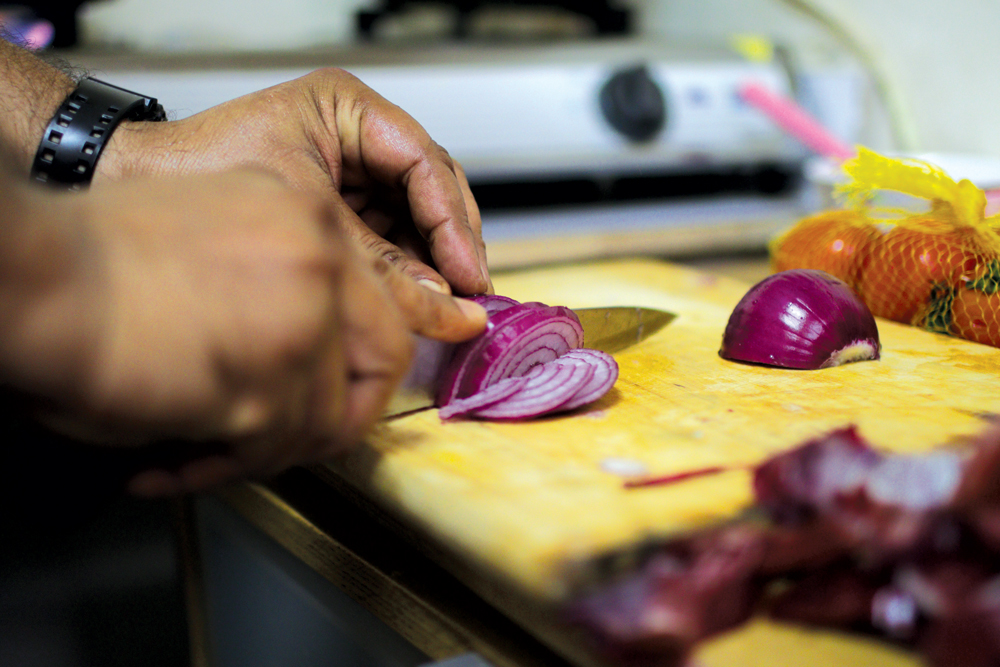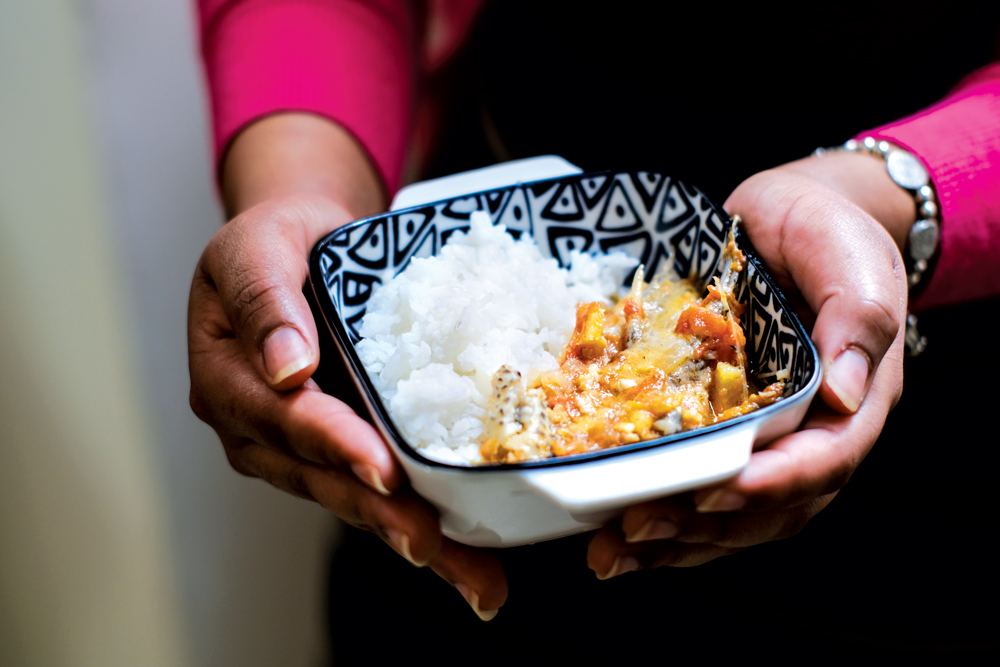
Mahmoud fled persecution in Pakistan, arriving in Hong Kong in 2001. He had hoped to find a job and to make a future for himself and his wife. The couple’s children were born and brought up in Hong Kong but Mahmoud remains a refugee. He is officially stateless and, unable to work, is unable to support his family. They are forced to live on welfare handouts. Mahmoud’s children are stateless, too. They have birth certificates but are denied the full range of rights that other children have. “I think it was a bad day, the day I made the decision to come to Hong Kong,” Mahmoud tells Leanne Ledgard, a volunteer.
Joseph is another refugee. His home country in Africa is embroiled in violence provoked by religion. He has a grounding in information technology but his refugee status prevents him from working. Joseph helps out with the computers in the Refugee Union office most days, while he waits for the government to process his claim to protection as a refugee. He runs to relieve the stress.
Yet another refugee is Alex, who has been in Hong Kong since 2013, having been driven from his home in East Africa by political upheaval. Alex was a teacher. He has helped countless refugees by giving advice or by pressing their claims in court.

Refugees in Hong Kong tend to stick together. “Culturally, people tend to relate to each other,” Alex tells Cynthia Chung, another volunteer worker. “If you don’t know someone, you want to talk to that somebody and get to know them genuinely. You feel that you want to help each other. That’s the way I was brought up,” he says. “My guess as to why refugees stick together in Hong Kong is because of one main reason: they suffer discrimination and prejudice together. They understand the hardships of seeking safety in this city. As the Englishmen say, ‘birds of a feather flock together.’ It’s all about survival. They have realised that, for them to make it here, they have to stick together as one.”
Also among the refugees is Isaac, who speaks with deep feeling about discrimination he ran up against in Hong Kong. Isaac came to Hong Kong in 2005 when violence erupted in Togo after a presidential election. He says Hong Kong shopkeepers would refuse to disclose the prices of the food in their monthly ration so recipients could never be certain if they got the HK$1,200 of food they were allowed. Isaac says the biggest bully is the Hong Kong government. He recalls with disgust how Legislative Council member Regina Ip, who was formerly Secretary for Security, proposed last year that refugees be confined in a camp outside Hong Kong to deter illegal immigrants from posing as refugees. “We went to Legco to meet with Regina Ip and we tried to explain to her how much the refugee kids are suffering under the system,” he says. “She told us Hong Kong children are better than the refugee children. She said we make crime.”
Now a scheme called Table of Two Cities is giving refugees in Hong Kong a way to tell their stories. Table of Two Cities was started last year by Tegan Smyth, who realised that refugees have few other opportunities to express themselves.

Hong Kong is one of the most hostile places to seek asylum in. It is against the law for refugees to do paid work and lawbreakers can be sent to prison for 15 to 22 months. The government gives them welfare allowances but what they receive is insufficient for their basic needs. Many cannot afford medical treatment or schooling for their children. Hong Kong people, particularly older people, tend to shun refugees. Few Hong Kong people take the time and effort to get to know any refugees, finding them strange and deeming them dangerous. Refugees that turn to crime tend to do so out of desperation.
The government is said to be slow in processing the claims of refugees and even slower to resettle them. Hong Kong is not a party to the UN Refugee Convention, so it does not grant asylum. But the region is a party to the UN Convention against Torture, which obliges the government to process claims made by victims of torture or persecution. However, processing the claims takes years. The South China Morning Post has reported that Hong Kong accepts 0.6 per cent of claims made by refugees. The newspaper said that, on average, all other governments around the world accepted 30 per cent. Mahmoud has waited 16 years for the government to process his claim.
Smyth estimates that about 11,000 refugees have claims pending. “I think there’s probably more because there are kids that are born to refugees and they wouldn’t be in the census because they’re all born stateless,” she says. “You have, maybe, 100 people coming to Hong Kong each month. But 11,000 is the statistic people throw around here. “No-one in their right mind, if they had the choice, would go to a place where the circumstances were worse. But they don’t have this information available. They don’t know Hong Kong treats asylum seekers this way.”

Smyth has a grounding in the law, gained when she was working in Australia to relieve the plight of refugees there. “I guess I got inside this alienation, desperation, that a lot of these refugees feel,” she says. “The difference is, in Australia there’s a lot more grassroots initiatives and people actually try and get refugees to do community events. There are actually increasingly more start-ups that are inclusive of refugees and relate to a cultural element, be it food or fashion.” In Hong Kong, most refugees are left to their own devices. “They get legal advice, they get some humanitarian assistance, but they are the target of smear campaigns in the press all the time and they don’t have many resources to express themselves, like a platform to share their own stories, let alone share something creative,” Smyth says. “What I’m doing, I didn’t see it as something particularly special. I just hoped that it would be the start of more creative initiatives.”
Smyth and her volunteers have been holding regular sessions at the Refugee Union office to gather information. The sessions bring together refugees from various countries, who tell their stories and share dishes representative of the food eaten in their home countries. Crowdfunding raises money for the ingredients and transport. The refugees prepare the dishes in the office kitchen. Volunteers take pictures, ask questions, and then write up the stories the refugees tell for the Table of Two Cities blog.
The goal is to collect all the stories in a recipe book. The dishes so far include katogo, from Uganda, a green banana and bean stew; veyi, from Togo, made with beans, cassava flour and palm oil; a dish from Madagascar of fish stewed in tomato sauce and coconut milk; and, from Pakistan, a fragrant mutton curry, with roti and biryani. “I’m not a trained chef or anything. I just think food is a very personal thing,” Smyth says. “It’s something that can definitely bring people together. People feel a sense of comfort in certain dishes, and it’s interesting to see that the dishes they choose are national dishes.”

An afternoon spent with the group is a heart-warming experience. Politics are left at the door. The refuges may be frustrated by their predicament, and they may sound without hope, but their exploits in the kitchen give them some happiness. #legend watched two friends cook and then serve portions of mutton curry, made with their garam masala, blended to a secret recipe. They woke early to prepare the ingredients before going to church. “From the food project, more people know about the Refugee Union and more people understand now how the system is. We know more about Filipino food, how Nepalese food is and Pakistani food. When Tegan posts on Facebook we always get donations,” says Isaac.
Smyth hopes to gather the recipes and put together a book later this year. “They all love cooking,” she says. “There’s so much to cover, I’m not even sure where we’re going to stop it. It is giving people a sense of purpose.”
The names in this report have been changed to protect the confidentiality of those interviewed. To learn more about Table of Two Cities, see their website and Facebook.To learn more about Tegan Smith, click here.
This article first appeared in the June 2017 issue of #legend magazine





